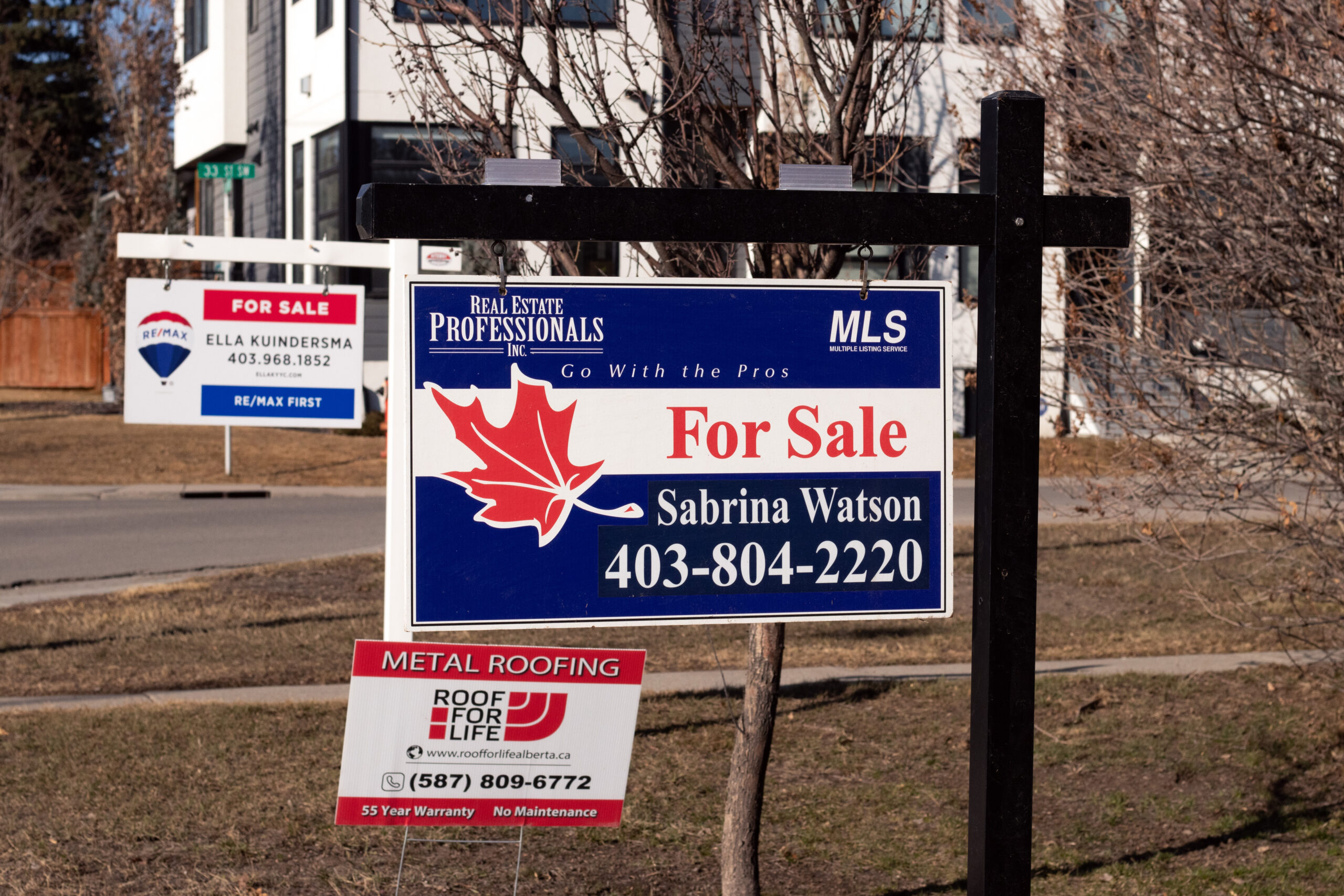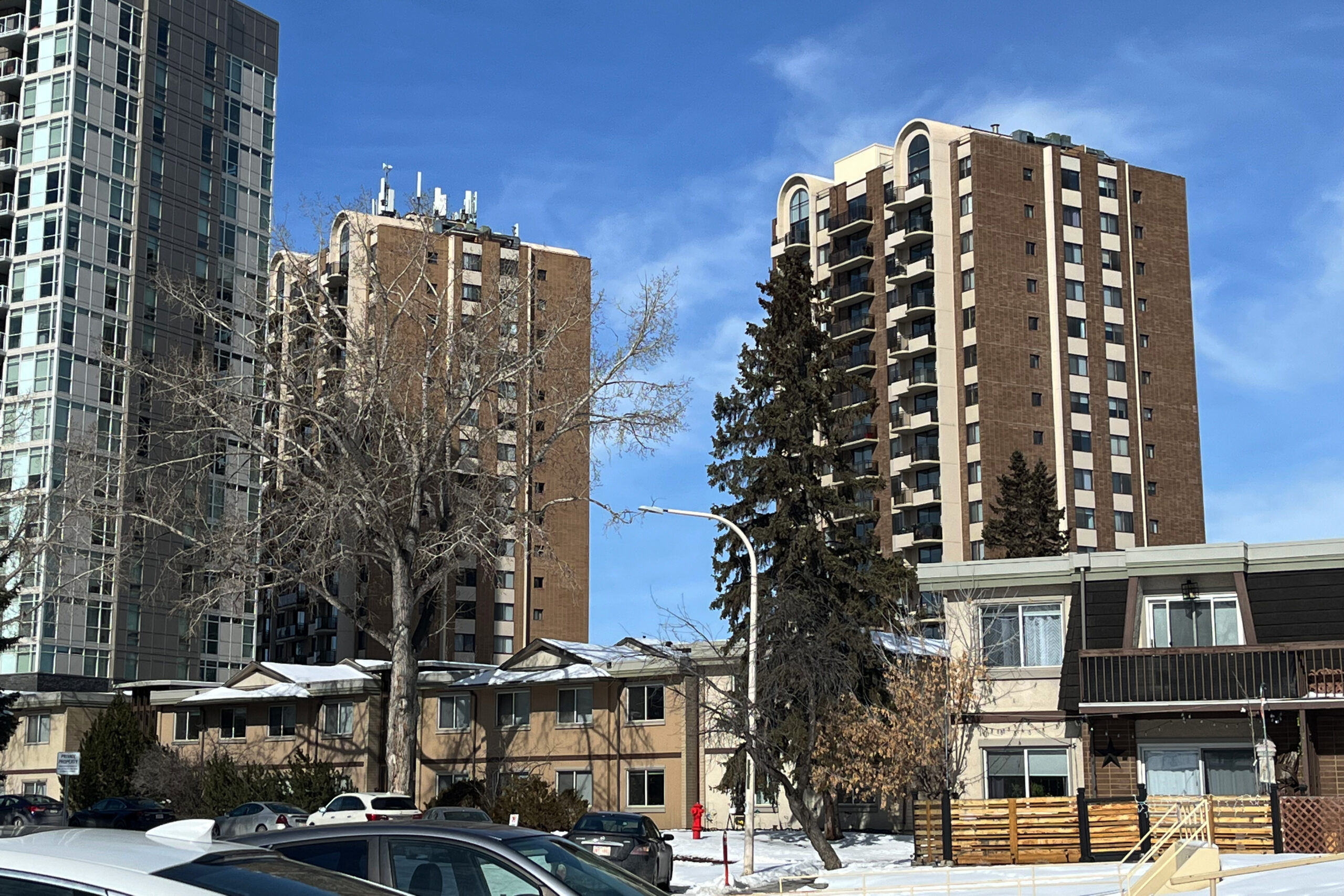Hope for future renters
Julie Patton
Kayla Goresht is a married teacher who has been saving to buy a home. However, rental increases are pushing the dream further and further away.
In February, she was shocked to hear her apartment’s rent was increasing by $600, a 37.5 per cent increase from her current rent of $1,600. The news came from her mom, who had seen it on a TV newscast on Feb. 6.
“We do not have cable. So, I heard about the rental increase from my mom,” she said. “I had to hear it from someone who wasn’t even in this building before I heard it from the company.”
Glenmore Gardens is the apartment complex Goresht lives, just south of the Glenmore Reservoir in the community of Palliser.
The building was sold to Avenue Living in December of 2023. Goresht said the transition of ownership had gone smoothly so far.
“They sent a little welcome basket to every resident with little measuring spoons with their name on it… saying nothing’s going to change.”
The company had notified residents that they intended to make improvements around the building, but gave no warning of their intention to increase the rent.
Goresht shares the apartment with her husband. Currently, they are living on a single income salary from her job as a Kindergarten teacher.
She said it was difficult adjusting to one income this year with everyday expenses like groceries – costing more. However, they haven’t had to tap into their savings yet.
Glenmore Gardens apartment complexes. // Photo: Julie Patton
On hearing the news of the increase, Goresht and her husband looked around at a few other apartments. However, newer builds of the same rental cost don’t have the amenities Glenmore Gardens have.
With bike storage, an indoor swimming pool, a fitness centre, laundry facilities, and underground parking, Goresht said the building will most likely increase the rent further on the next round lease renewals.
Although she understands the increases in terms of market value, she wishes the company had given the tenants more notice. With three months’ notice, Goresht is already preparing for how she will manage the change.
Yet, some tenants had less than a month, including senior citizens, single parents, and families.
“This is an assumption, but people who are raising multiple children in apartment buildings are here not because they want to be. It’s because it’s what they can afford,” Gorescht said.
Goresht and her husband’s long term goal is to buy a house. With a strong savings account set up, she felt they were on the right path. Yet, with a 37.5% increase in rent, she said that saving will take a little longer.
“The plan was, the next time we moved it was going to be into a house and then we’d never have to move again,” she said. “We do feel like we’re probably going to end up being here a lot longer than expected, probably because we’ll have to put a lot more money into savings which will take a lot longer with how high the rent is going up.”
Apartment complexes along Memorial Drive. // Photo: Julie Patton
An Experience for Many
In January, the Canada Mortgage and Housing Corporation (CMHC) released its rental market report.
The report showed that in October 2023, Calgary’s rental market suffered a one per cent vacancy rate in the condominium apartment market. The purpose-built rental market fared no greater with a 1.4 per cent vacancy rate, down from 2.7 per cent in 2022.
In the purpose-built rental market, the average two bedroom rental cost $1,695, a 14.3 per cent increase from 2022.
With both an increase in immigration, international migration, and interprovincial migration, Calgary’s rental market has grown tighter. Additionally, market intelligence from CMHC suggests “landlords no longer offer incentives to potential tenants.”
With rental vacancy so low, it is no question that the city needs a larger housing supply.
Joe Mueller, City of Calgary manager of planning and policy services, said one reason there is high pressure on the rental market is the lack of affordable housing for those interested in buying.
“People who are looking for a smaller home or a home in a certain location may only be able to find that in the rental apartment market, because there’s no choice if they’re looking for a house.”

Multiple “for sale” signs on a Calgary street. // Photo: Julie Patton
The Home is Here strategy aims to increase the supply and diversity of housing, and in turn, the opportunity to buy will increase, said Mueller.
“People who might only have the choice of an apartment today could move into a row house. That makes the apartment available for others,” he said. “There's movement in the system, creating gaps that other people can then fill. Over time, it will also help reduce the pressure on the rental market.”
“Change will not be immediate in all areas of the city. There will be areas where it's more incremental, it'll take longer to do,” Mueller said.
Does new development equal affordable?
Mueller’s explanation mirrors trickle-down housing or filtering. Filtering is an economic theory that centres on the idea that if you maximize the supply of housing in the high-end market, other available housing will “trickle-down” to meet the affordable housing demand at a reduced price.
Jessica Barrett, an award winning journalist who has been researching the housing crisis, said filtering has not worked since housing policies began to be established between the First and Second World Wars.
“There has always been a population of people in Canada that have not been able to afford market rate housing,” Barrett said. “Actually, the way that we're approaching development is that a lot of development is taking out affordable housing.”
The affordable housing Barrett speaks of is older homes. Although they may be run-down, out of date, and could use a little work- these older homes are affordable.
Yet these are the homes being torn down to create medium density housing - which remains unaffordable.

